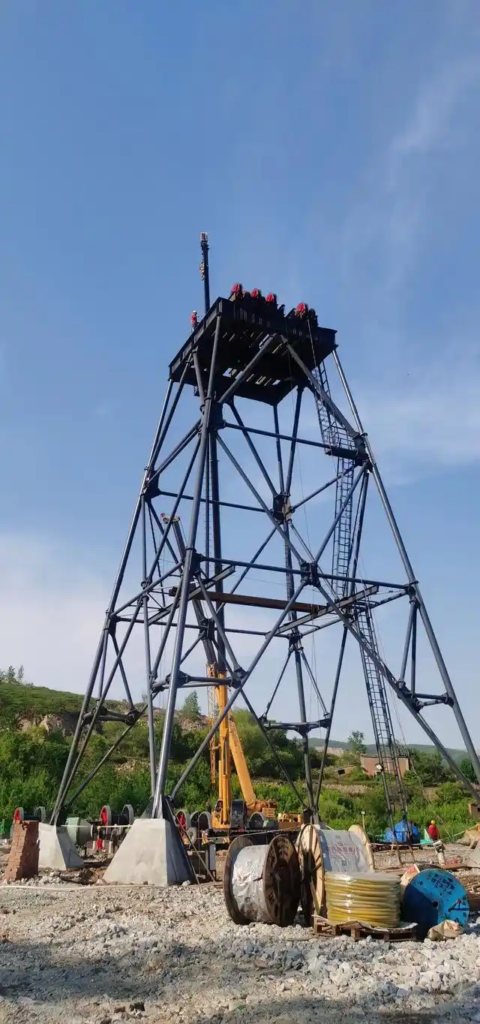Basic Knowledge of Drilling Derrick and Substructure
Definition of Derrick
A drilling derrick is a tower-like steel structure used to mount hoisting equipment such as the crown block, traveling block, and hook. It bears the loads generated during drilling, casing operations, and other related work. It provides the necessary height and space for lifting and lowering operations and for storing tubulars.

The derrick typically consists of the main body, crown block platform, crown frame, monkey board, standpipe platform, and work ladder.
Types of Derricks
According to structural characteristics, derricks can be divided into the following four categories:
1. Tower-Type Derrick
The tower-type derrick is one of the most commonly used derricks in early onshore drilling in China. It features a four-sided truncated pyramid-shaped space structure with a square cross-section. It is generally a single-member assembled structure, requiring high-altitude work and considerable time for installation and dismantling.
However, it offers a wide base for stable support and has an enclosed structure, providing excellent overall stability and high load-bearing capacity. This type is also the most common derrick structure used on offshore drilling rigs.
2. A-Type Derrick
As the name suggests, the A-type derrick resembles the uppercase letter "A". It consists of two lattice or tubular legs, connected at the top by the crown block platform and additional members, forming an "A"-shaped space structure. The leg cross-section can be rectangular or triangular.
A-type derricks are known for their good load-bearing capacity and overall stability. Segments are connected by pins, and the derrick can be assembled at a low level and raised as a whole using a winch and guy lines. With an open front and rear design, it offers excellent visibility for the driller and is often referred to as a "full-vision derrick".
3. Mast-Type Derrick
Mast-type derricks are primarily used in truck-mounted drilling rigs and workover rigs. They consist of one or several lattice or tubular legs and are typically tilted 3° to 8° toward the wellhead during operation. Guy wires are required to maintain structural stability.
Mast-type derricks are divided into telescopic and non-telescopic types, with telescopic versions commonly used in truck-mounted drilling and workover rigs.
4. K-Type Derrick
The K-type derrick is the most commonly used derrick in modern land drilling. It features a front-open design and a П-shaped space truss structure. The sides are divided into multiple welded segments, while the back consists of truss members.
Segments and components are connected using pins or bolts. The derrick can be installed at a low level and raised as a whole using winch power or hydraulic cylinders. This type is known for its excellent structural rigidity and can also be designed as a telescopic derrick.

